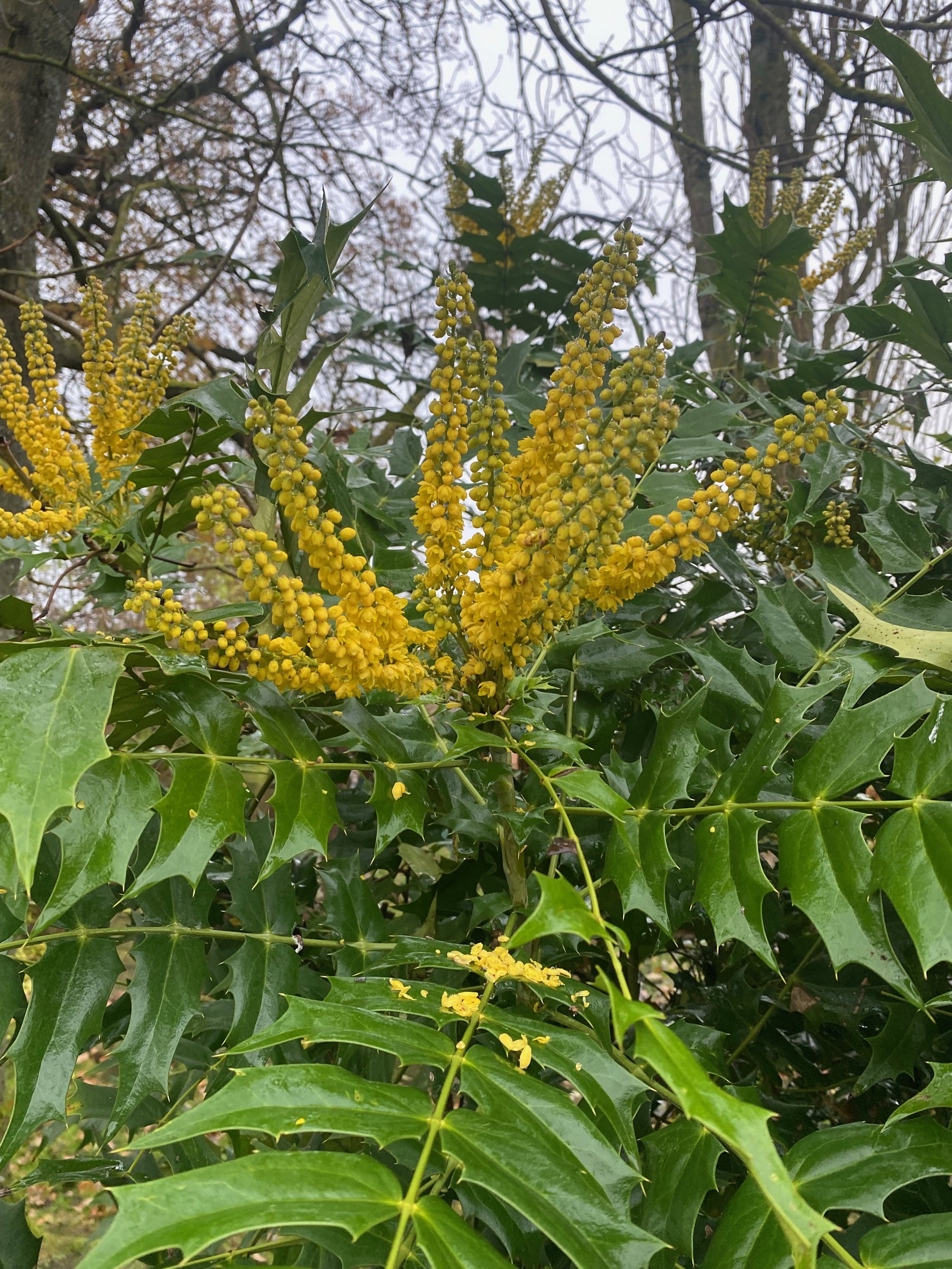Plants to extend the season: Late season colour and food for insects
One key thing to think about in the autumn and early winter is whether you have enough flowering plants for the pollinators. There’s isn’t a great deal flowering at this time of year so its’ important to provide sources of pollen and nectar for the insects that are still active. And of course for us humans to enjoy the look of too. Some of my favourite plants for late season colour and nectar are:
Mahonia (Mahonia x media ‘Charity’). Flowers from late autumn to late winter and have long attractively shaped slightly prickly leaves and stalks of bright yellow scented flowers. The flowers are full of pollen and nectar and loved by bumblebees. Fruits are edible and ripen in summer, if you can get hold of them before the birds! Must be cooked and make a good jam.
Winter jasmine (Jasminum nudiflorum). Deciduous shrub with long arching branches covered in small yellow flowers in winter and spring. It works well climbing along a wall or fence. (although not self supporting so it will need tying in).
Ivy (Hedera helix) is an important late season source of food for our pollinators. A whole host of insects rely on them for food before they they hibernate for winter. Ivy is also such good cover for birds all year round. Try planting Ivy and Winter Jasime together. Both are tough and tolerant of the same conditions so ideal for a difficult spot in the garden such as a north facing wall.
Sedum (Hylotelephium). Upright stems with succulent leaves and masses of lang-lasting flat heads of many tiny flowers. Butterflies particularly like them as the large flat heads make it easy for them to land.
Mahonia and sedum add late season colour and food for insects.
Video of bees feeding from Sedum flowers.


